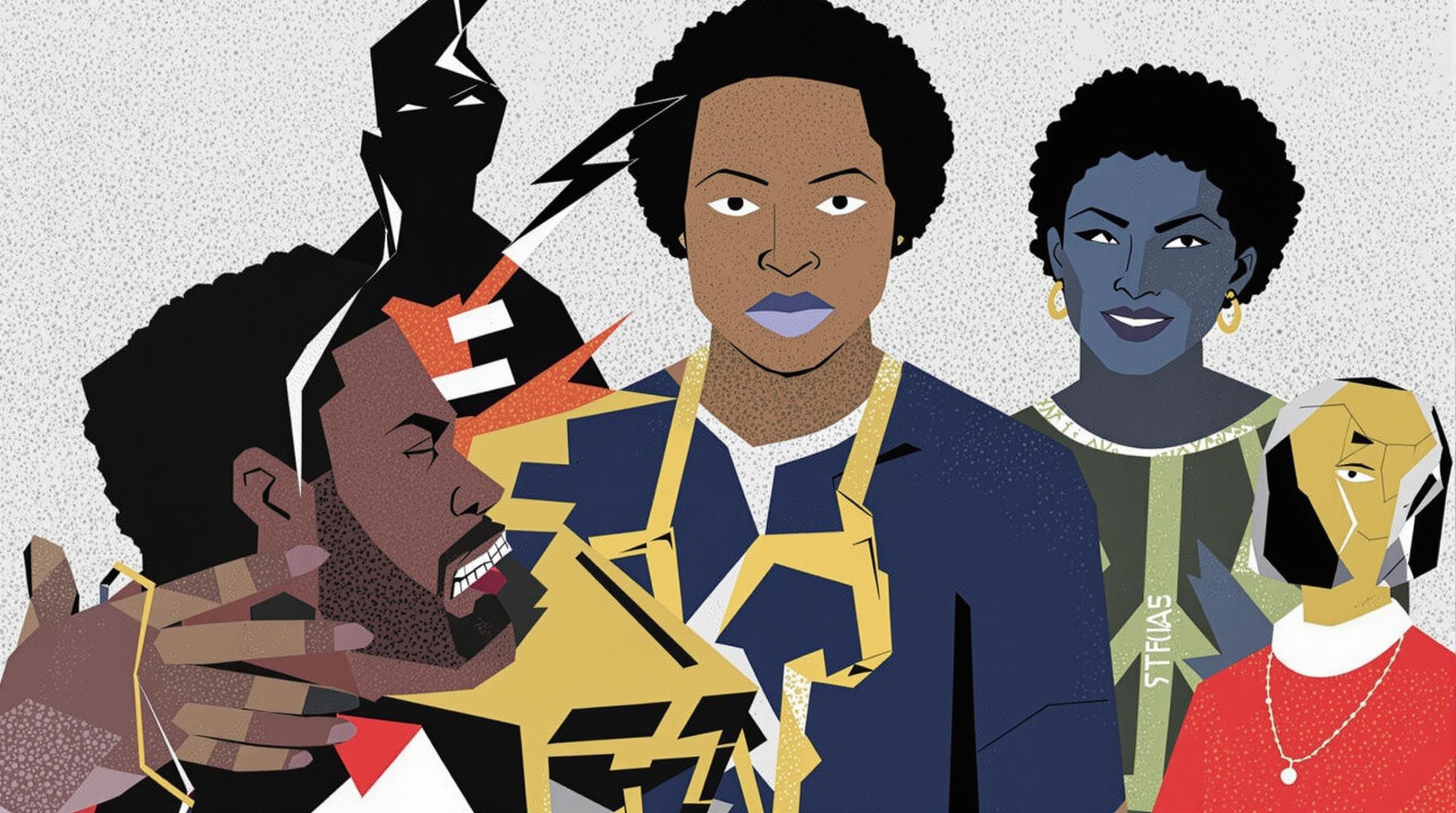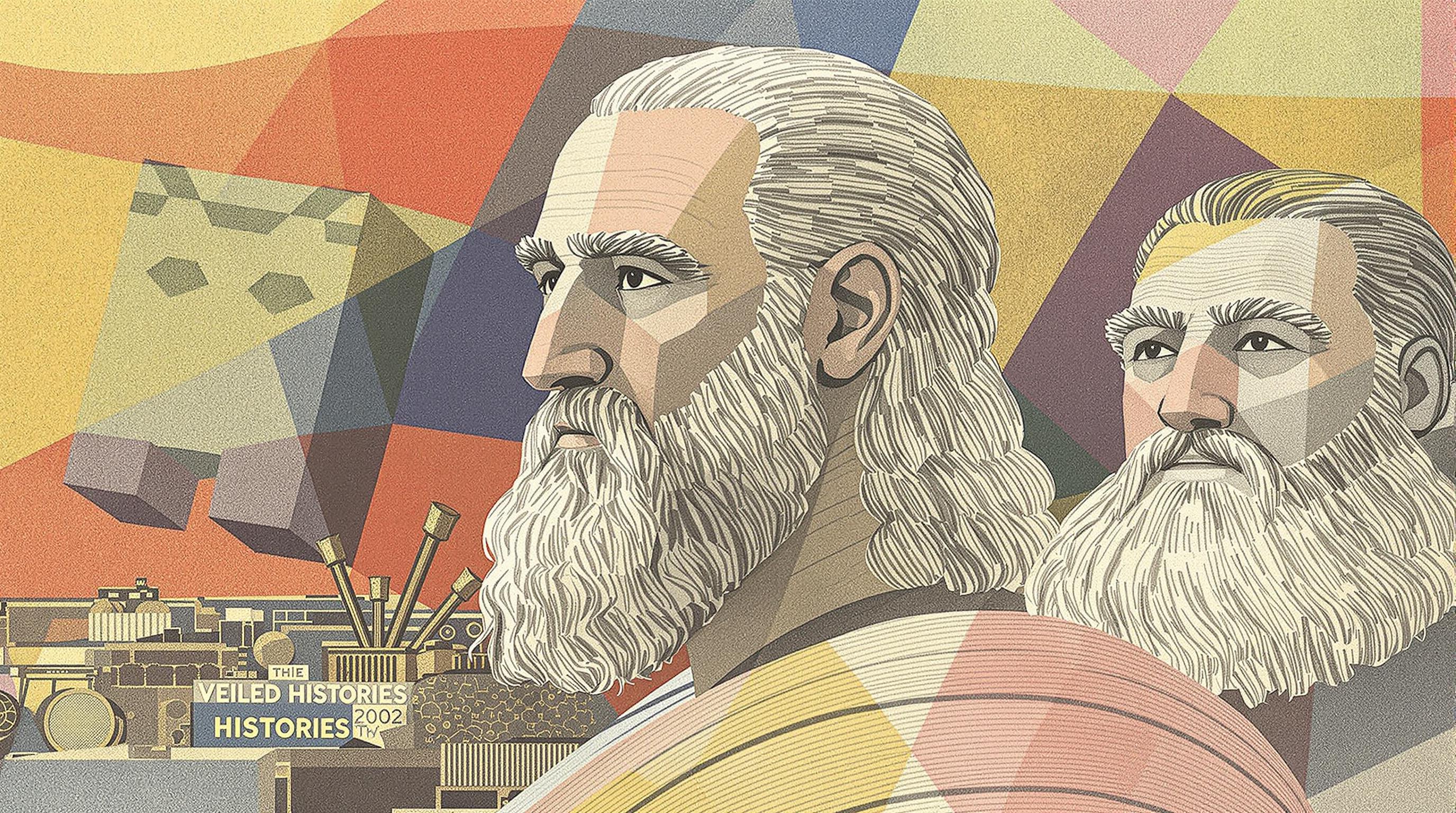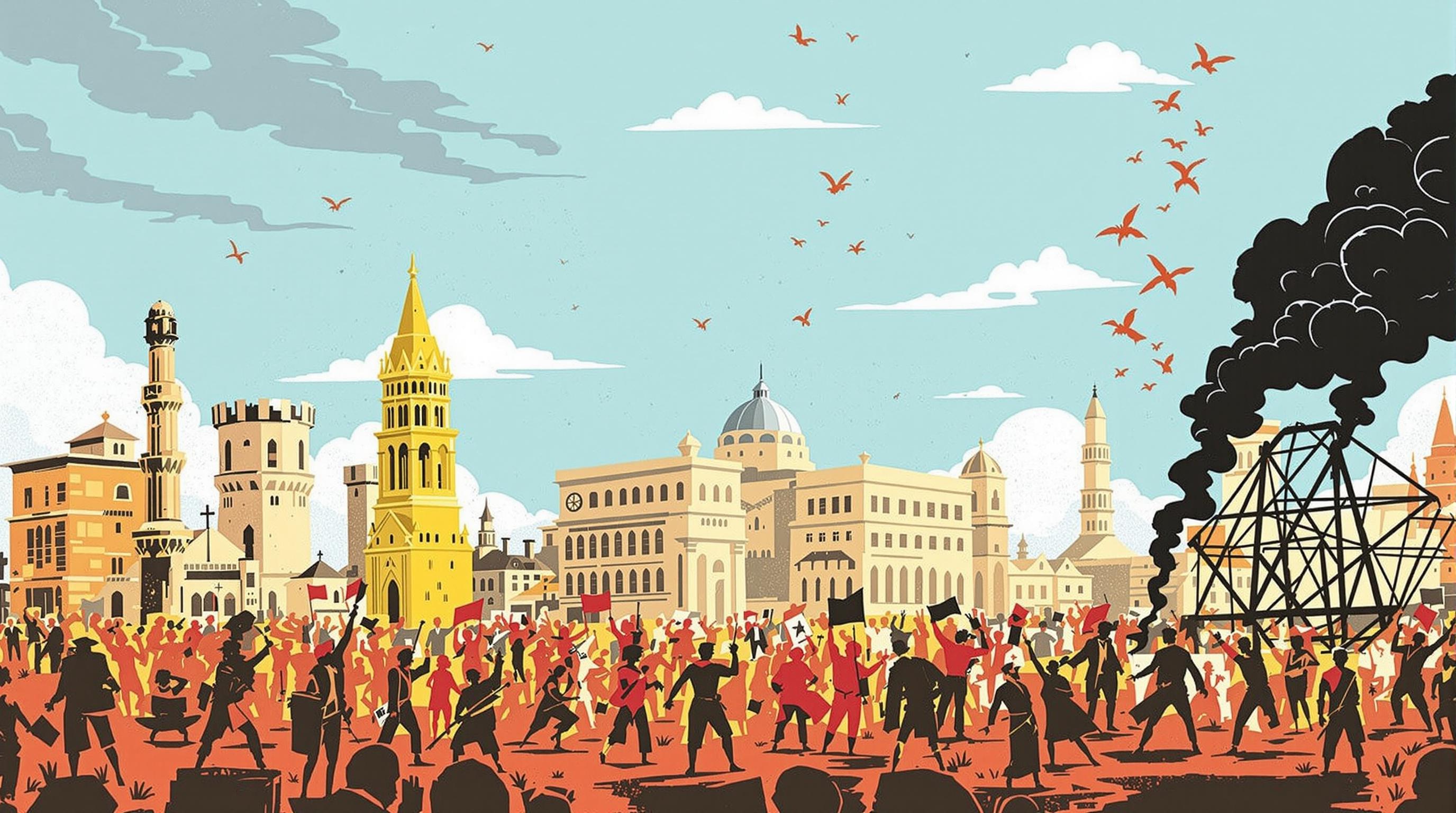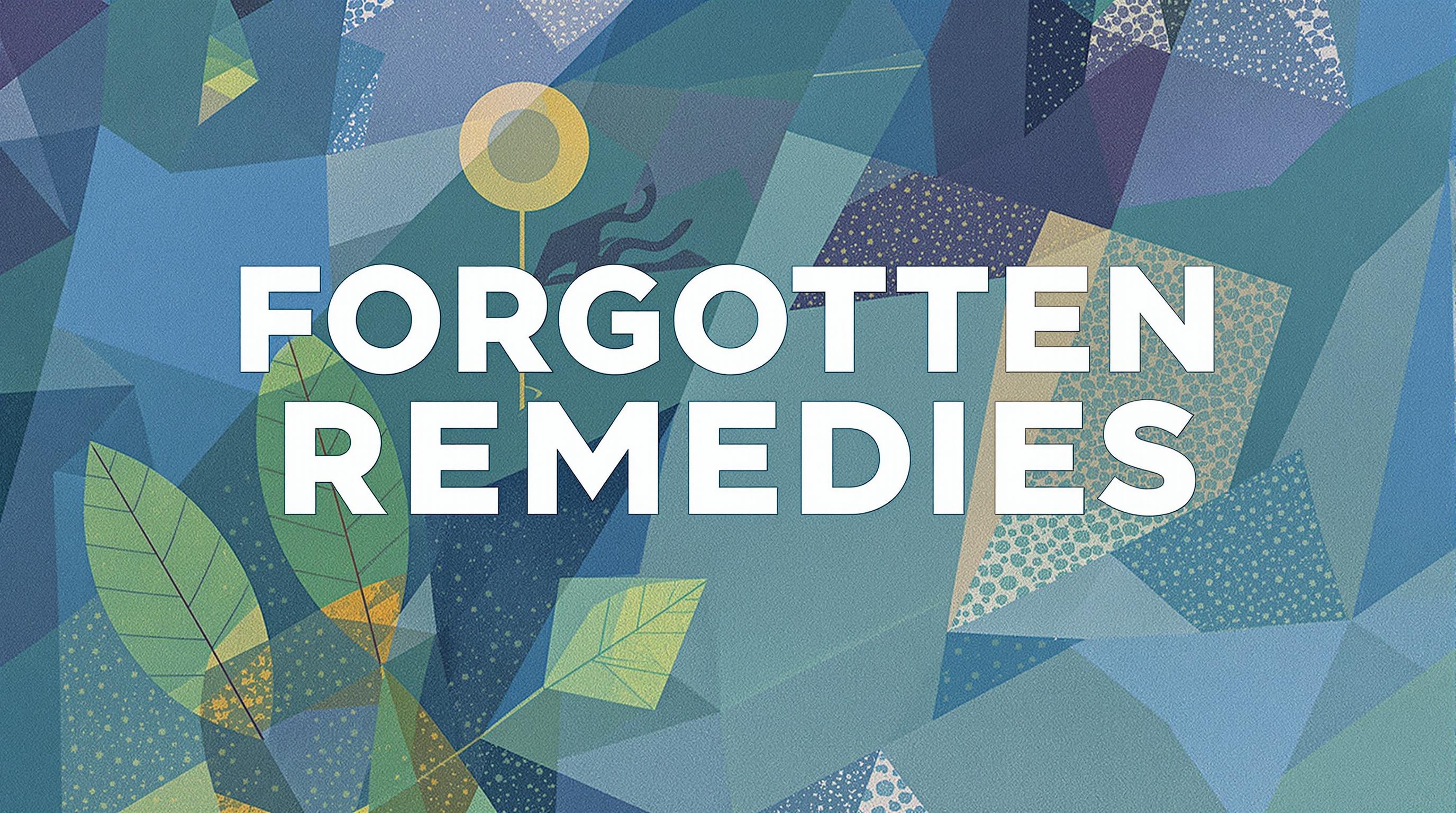Related Articles
- Reviving Ancestral Wisdom: How Outdated Superstitions Can Shape Contemporary Mental Health Practices
- Veiled Histories: How Little-Known Figures from the Past Can Transform Contemporary Leadership Approaches
- The Art of Disruption: How Past Rebellions Shape Today's Entrepreneurial Spirit
- Lost in Translation: The Surprising Role of Language in the Evolution and Misunderstanding of Global Currency
- Currency as a Canvas: Exploring the Intersection of Politics, Propaganda, and Artistic Expression in Monetary Design
- Unmasking the Shadows: How Currency Forgers Shaped Financial Trust and Safety Through the Ages
Beneath the Surface: How Forgotten Fables Inform Present-Day Social Justice Movements
Beneath the Surface: How Forgotten Fables Inform Present-Day Social Justice Movements
Beneath the Surface: How Forgotten Fables Inform Present-Day Social Justice Movements explores the relevance of age-old tales in shaping contemporary societal norms. By analyzing forgotten fables, we can uncover valuable lessons that resonate with current social justice movements, revealing a timeless battle for equality, justice, and moral integrity.
Storytelling as a Catalyst for Change
As a 25-year-old writer who spends hours binge-watching modern adaptations of classic tales, I've often wondered about the truths these narratives can reveal. Take the story of "The Boy Who Cried Wolf," which reminds us of the dangers of deceit. In today’s climate, where misinformation spreads like wildfire, the moral of truth-telling is more relevant than ever. According to a study by the Pew Research Center, 62% of adults believe social media makes it easier for misinformation to spread—egg-sactly (yes, pun intended) why we should hold our truths sacred!
Rediscovering Old Fables
It’s fascinating how these ancient stories, though much forgotten, carry the weight of knowledge that speaks to us today. "The Tortoise and the Hare" is not just about speed versus patience; it's about the social dynamics of complacency versus diligence, a dichotomy mirrored in today’s social movements. Think of social justice advocates lobbying for climate change—while some may sprint with offers of quick fixes, the “tortoises” are often the ones crafting sustainable long-term strategies.
Once Upon a Time: Fables in a Modern Context
Perhaps one of the most moving examples is that of the fable "The Ant and the Grasshopper." Traditional themes of hard work versus carefree living illustrate deep societal divides between the privileged and the underprivileged. In recent years, as gig economies and climate crises emerge, the fable’s narrative reflects real-world social justice issues. Did you know that 80% of the world’s poorest people rely on informal jobs? The grasshopper may very well have the upper hand in a society devoid of safety nets.
Learning from the Past
Modern social justice movements often cling to the wisdom embedded within historical fables. For instance, the Civil Rights Movement of the 1960s reinforced the age-old moral that “all creatures are created equal.” The stories of equality and justice, such as those found in Aesop’s Fables, resonate strongly. An example from history is the use of the “I Have a Dream” speech by Dr. Martin Luther King Jr., which found inspiration in both biblical and classic literary rhetoric.
Sometimes, merging storytelling with social causes can be cathartic. Participatory storytelling workshops have emerged in social justice circles, using narrative techniques to help individuals reclaim their voices. A notable case study involves youth in Chicago reclaiming their own narratives through spoken word poetry, an effort underscored by the fable of "The Lion and the Mouse," which teaches even the smallest voice can save a mighty one. These workshops have been shown to increase self-esteem, as detailed in reports by the International Journal of Arts and Education.
The Narrative Fallacy and Social Context
We are susceptible to what psychologists call the "narrative fallacy," a term coined by Nassim Nicholas Taleb. This refers to our tendency to create stories that simplify complex realities. Fables, although succinct, fall prey to this as well; so it is crucial to analyze them through a contemporary lens. For instance, the simplicity of "The Fox and the Grapes" cautions against elitism and the disdain for things we cannot have; however, it also overlooks deeper issues of systemic barriers that prevent access. These barriers are vital for social justice advocacy today.
Case Study: Fables in Popular Activism
Case studies across the board have shown that storytelling amplifies activism. The 2019 climate strikes led by youth across the globe echo the ethos found in folklore, where persistence leads to transformation. Influencers such as Greta Thunberg have used the metaphors of fables to express urgent calls for action. According to data from the Global Climate Strike event (UN, 2019), 4 million people participated worldwide, underscoring the importance of collective storytelling as a means to unite a cause.
Modern Interpretation of Fables Achieving Impact
Look at social media today—with each tweet and share, stories spread like wildfire, reminiscent of the spreading fables of old! In 2020, the hashtags like #BlackLivesMatter and #MeToo took on a narrative life of their own. These movements utilize millennia-old storytelling techniques to connect deeply personal experiences to broader societal injustices. Just like fables, these stories are meant to resonate, evoke empathy, and demand change.
Humor as a Tool for Reflection
Not all narratives need to be grave and serious, though. There is humor found in stories that can serve the same purpose as earnest fables. For instance, consider the fable of "The Chicken and the Pig," which humorously demonstrates the difference between commitment and involvement. Simply put, in today's social justice parlance, awareness without commitment is merely noise. Humor often acts as a mirror to society’s follies, making it a powerful tool in activism, as seen in campaigns utilizing satire to critique social issues.
What Lies Beneath: Lessons to Carry Forward
Continuing our exploration of forgotten fables, we can draw parallels between their morals and today’s social justice initiatives. In the tale of “The Golden Goose,” greed leads to its downfall, a lesson for organizations seeking merely profit over purpose. Research from the World Economic Forum reveals that companies with strong social purpose outperform their competitors by up to 400% in terms of employee retention and customer loyalty. It’s clear that the proverbial “golden eggs” come from treating people—both employees and customers—as integral to the journey.
As storytellers, we have the power to frame the narrative around injustices. By utilizing the morals gleaned from fables, social activists can provide powerful counter-narratives to mainstream media. Fables have shown us the way in the past, and they guide us through the tangled web of modern challenges, reminding us that while the formats may change, the underlying truths remain constant. It’s about transformation—turning the proverbial bitter fruit into sweet knowledge that enlightens and advocates for the collective good.
A Call to Action: Embrace the Fables
So, what's the takeaway here? Embrace these forgotten fables. Use them to inspire dialogues, stimulate debates, and to nurture empathy in your community. They may be tucked away on dusty bookshelves, but their wisdom can illuminate social landscapes marred by division. As digital natives, we have the tools—the hashtags, the tweets, the stories—to rejuvenate these age-old lessons and wield them like swords against ignorance.
The Intersection of Old and New
As we move forward, allow these fables to collide with modern narratives. For example, in a world of fast-paced advocacy, reinterpreting "The Three Little Pigs" can serve as a critique on housing injustice, where the wolf represents systemic inequality. The beauty of storytelling is that it transcends time; the morality remains relevant regardless of the setting. As a 34-year-old thinker, I believe that cultivating this bridge between the past and present can yield a future where justice reigns supreme.
Historical Context Matters
To fully comprehend these tales, we must recognize their historical context. Fables often stem from oral traditions rooted in specific cultural experiences, embodying the values, norms, and struggles of their times. According to studies in cultural anthropology, understanding these contexts enhances our grasp of pride and prejudice narratives that still echo today. Knowledge is the key to unlocking the meanings beneath the surface of forgotten fables.
In conclusion, the forgotten fables of our past should not remain dormant; they are valuable blueprints for contemporary social justice movements. History is cyclical, and we find ourselves revisiting the same themes in our ongoing quest for equity. It’s a shared journey, and by reinvigorating these old narratives, we can craft a more just tomorrow that resonates with the ideals of unity, integrity, and above all, understanding.




